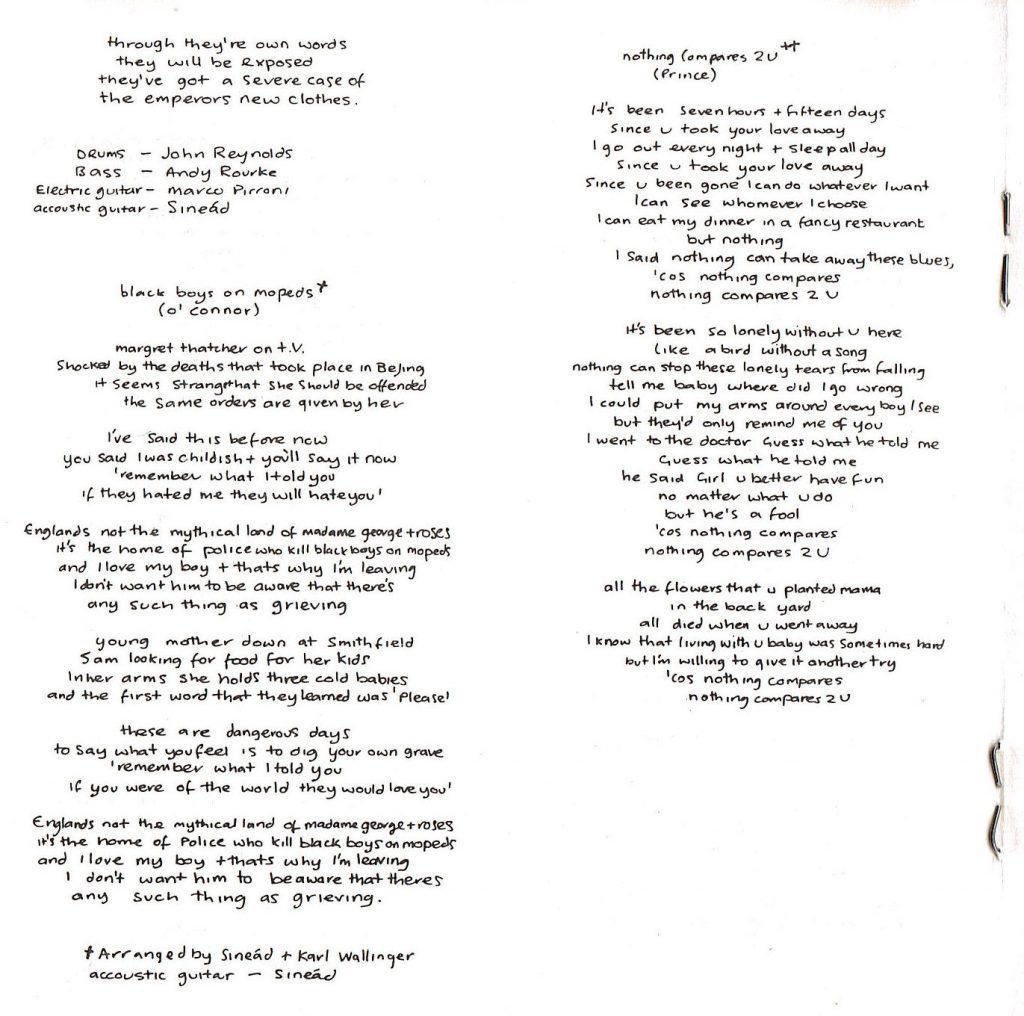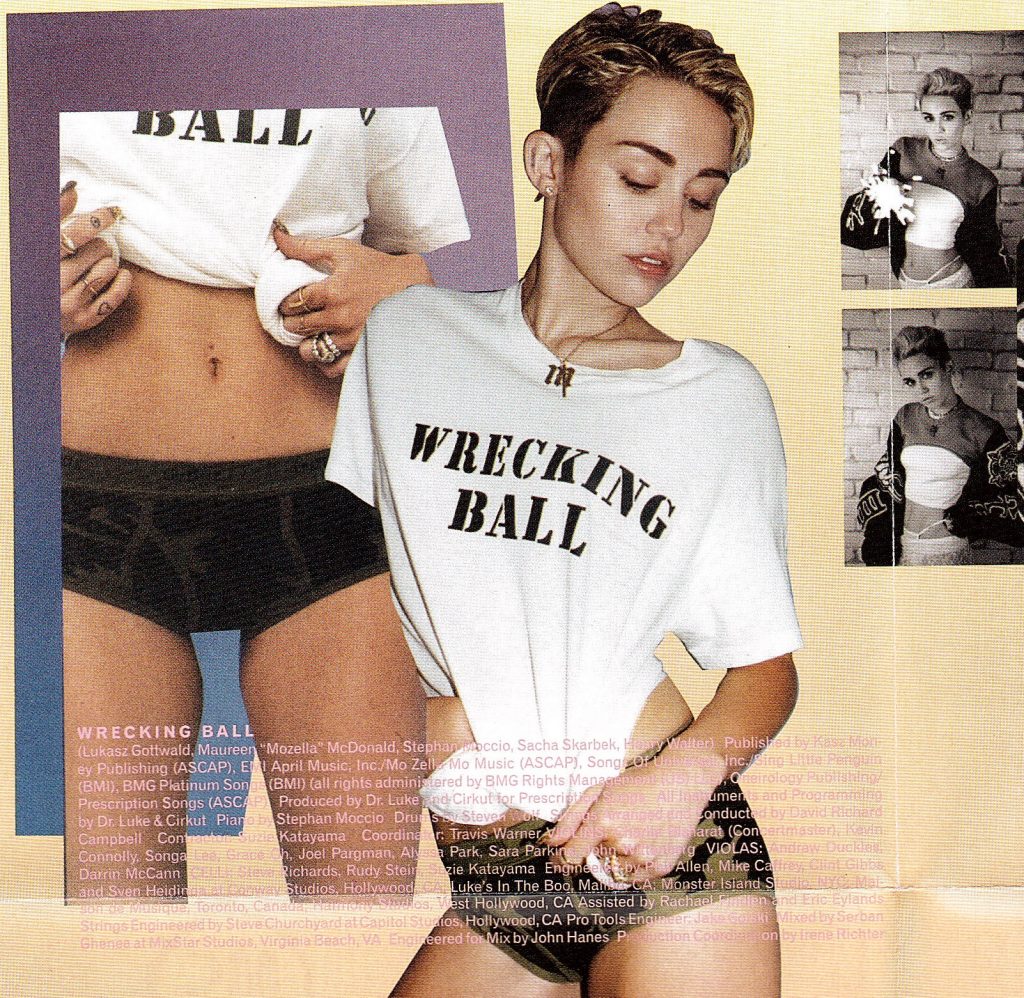Nothing Compares 2 U and Wrecking Ball are classic power ballads, utilizing the same collection of instruments to create two memorable songs. The songs create a minimalistic sound using only string arrangements (including guitar, viola, violin cello, piano, bass), and a basic drum kit.
For O’Connor, instrumentation was critical in her ownership of the piece. Nothing Compares 2 U was written by Prince for his band project, The Family, in 1984. While minimalistic in spirit, the song has an almost astral feel, plus a trumpet solo. While this instrumentation is a signature collection of sound that only Prince could pull off, the song never managed to peak in the charts. The song was offered to O’Connor, who was only a young artist fresh off releasing her first album. Within the tiny, printed “handwritten” liner notes, there is little notation to suggest the song had any sort of disputed history or complex instrumental work, save for a double cross indicating the song had joint production with O’Connor and Nellee Hooper. A much larger story can be found in the background, uncredited, as O’Connor wanted to appear as sole producer (Buskin, 2012).

The version of Nothing Compares 2 U that O’Connor came to produce was evocative of her own style. The process of getting a sound that felt on brand, however, was not necessarily straightforward. Producer Chris Birkett describes his involvement with the song as an intervention: O’Connor had just had a falling out with Nellee Hooper, leaving her with a song, a drum loop, and some strings (Buskin, 2012). “Japanese acid jazz virtuoso” Gota Yashiki is credited (but uncredited in the liner notes) with saving the backing track by setting up a programmed string arrangement for the song (Buskin, 2012). After that, Birkett’s work centered on timing drums and setting up downbeat chords on the piano. The double-tracking vocals would further create an organ-like sound. Finding the perfect backdrop to dial back was crucial to give O’Connor a song that was both light on instrumentation, but carrying a dirge-like feel.
Rolling Stone described Wrecking Ball as a “heartbroken counterpoint to the hedonism of Bangerz‘s lead single, ‘We Can’t Stop'” (Coleman, 2013).” The idea of the unexpected permeates the song, allowing a stronger build-up through the piece. The song begins with a muted string set, putting an emphasis on Cyrus’s clear vocals. A larger, louder, cross section of musical instruments appear in the midst of the chorus, a surprise for listeners. The instrumentation is an aggressive surprise, one which will rise to match the abrupt jolt in later accompanying visuals. A kick and snare match up to bring in the wrecking ball, instrumentally signifying the lyrics (Kval, 2016).

Wrecking Ball, even with its layered strings, is a vulnerable piece. In a way, the song is about whether or not Cyrus can sing. Even with a new haircut and surrounded by controversy, the essential Miley Cyrus should not have changed. Wrecking Ball was the song to prove Cyrus could still rock a heavy hitting ballad on the merits of her voice. Some music writers completely panned the new song due to its vague instrumentation and the sense of homogeneity in sound (Senior, 2014). Even so, this was part of the song’s massive success: the most controversial attention was meant to be trained on the music video, not the song itself. The instrumental formation of Wrecking Ball strongly attempted to create a big sound in the quietest of ways, relegated far to the back of Cyrus’s voice.